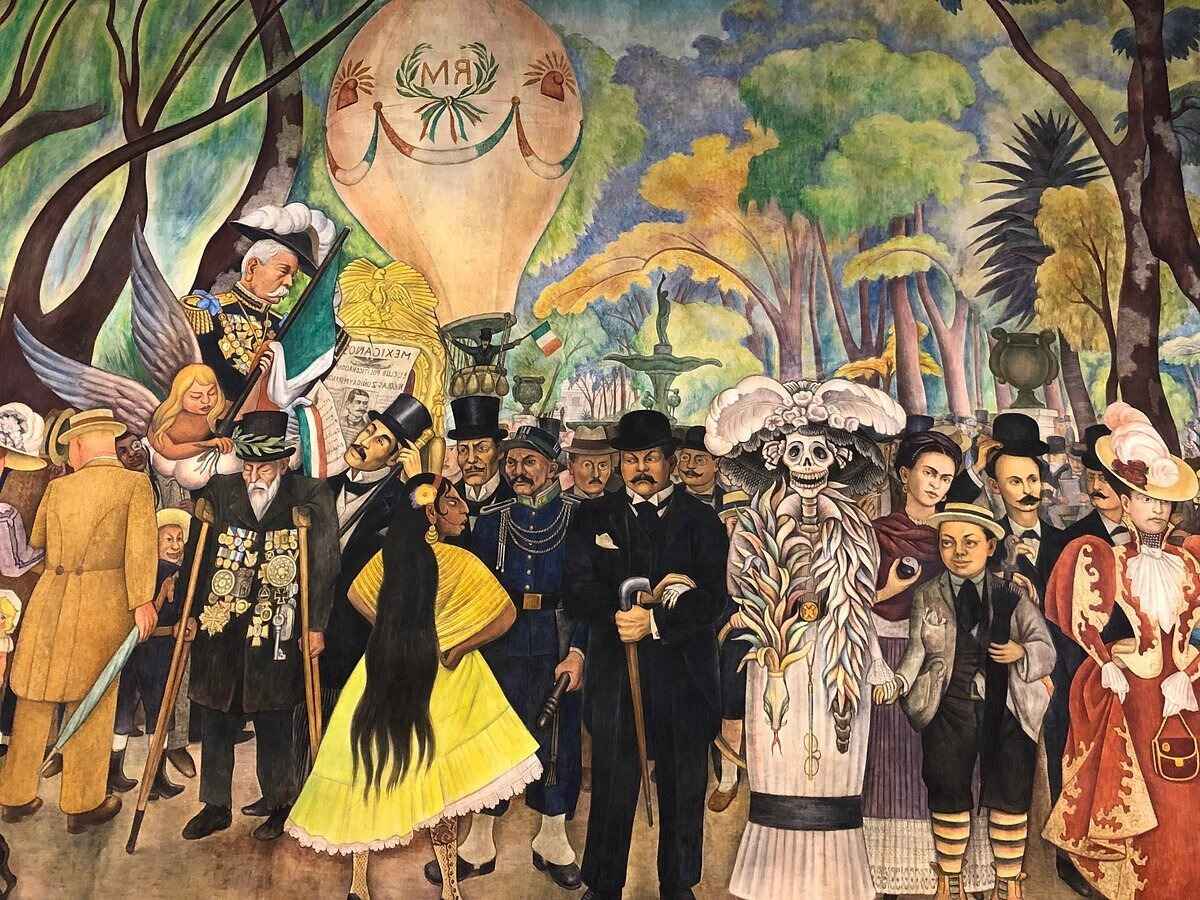
Ever wondered about the man behind those massive, mesmerizing murals that capture the essence of Mexican society and history? Diego Rivera, a name synonymous with the Mexican mural movement, has left an indelible mark on the world of art. But what's the story behind this iconic figure? From his tumultuous relationship with Frida Kahlo to his controversial political views, Rivera's life was as colorful and complex as his artwork. Ready to dive into a world where every brushstroke tells a story? Let's peel back the layers of history and uncover the fascinating facts about Diego Rivera. Trust me, this is one art history lesson you won't want to skip!
Key Takeaways:
- Diego Rivera was a revolutionary Mexican artist known for his powerful murals that depicted social inequality, political messages, and indigenous culture, leaving a lasting impact on modern art and global cultural identity.
- Rivera's tumultuous marriage with fellow artist Frida Kahlo, his commitment to communism, and his innovative use of fresco painting all contributed to his influential legacy in art, education, and activism.
Who Was Diego Rivera?
Diego Rivera, born on December 8, 1886, in Guanajuato, Mexico, was a prominent painter and muralist whose large frescoes helped establish the Mexican Mural Movement in Mexican art. His works are famous for depicting Mexican society, culture, and politics, and he remains one of the most influential artists in modern history.
-
Rivera showed an early interest in art, beginning his studies at the age of ten.
-
He traveled to Europe in 1907, where he immersed himself in the avant-garde art scene, drawing influences from Post-Impressionism, Cubism, and Renaissance frescoes.
Rivera's Artistic Contributions
Rivera's murals are scattered across Mexico and the United States, serving as public art that educates and provokes thought. His ability to blend themes of social inequality with indigenous culture and political messages marked a significant point in art history.
-
One of his most famous works, "Man at the Crossroads," was controversially destroyed because it included a portrait of Vladimir Lenin, reflecting Rivera's communist beliefs.
-
Rivera was instrumental in the establishment of the Mexican Mural Movement, which sought to use public spaces to educate the masses and promote social change.
Rivera and Frida Kahlo: A Love Story
Rivera's personal life, especially his relationship with fellow artist Frida Kahlo, is as captivating as his art. Their tumultuous marriage, characterized by mutual artistic respect and personal betrayals, fascinated the public.
-
Rivera married Frida Kahlo in 1929, despite their significant age difference and Rivera's reputation for infidelity.
-
Their marriage was marked by both passion and turmoil, inspiring much of their art.
Rivera's Political Beliefs
Rivera's political beliefs were a central theme in his art and life. A committed Marxist, he believed in using his art to promote social ideals and political change.
-
He joined the Mexican Communist Party in 1922 but was expelled and re-admitted several times due to ideological disagreements.
-
Rivera's commitment to communism led to significant commissions and equally significant controversies, reflecting the political tensions of his time.
Rivera's Legacy
Diego Rivera's impact on art and culture extends far beyond his lifetime. His murals continue to be revered for their technical brilliance and profound social commentary.
-
In 1957, Rivera passed away in Mexico City, but his work continues to inspire artists and activists around the world.
-
UNESCO declared Rivera's Detroit Industry Murals a World Heritage Site, cementing his place in global cultural history.
Rivera's Influence on Modern Art
Rivera's influence on modern art is undeniable. His approach to muralism, his integration of political and social themes into his work, and his bold use of color have inspired generations of artists.
-
His technique and style helped redefine mural painting, making it a powerful tool for social and political expression.
-
Rivera's work paved the way for future artists to explore themes of identity, struggle, and resilience, influencing not just art but also how society views public spaces and the role of art in activism.
Rivera's Contributions to Cultural Identity
Rivera played a crucial role in shaping Mexico's cultural identity post-Mexican Revolution. His murals often depicted Mexico's history and people, celebrating indigenous cultures and heritage.
-
Through his art, Rivera contributed to a renewed sense of national pride and cultural identity among Mexicans.
-
His depictions of everyday life and historical events have become iconic representations of Mexican culture and identity.
Rivera's Global Impact
While Rivera's work is deeply rooted in Mexican culture and politics, his influence extends globally. His art has been exhibited worldwide, and his approach to muralism has inspired similar movements in other countries.
-
Rivera's murals in the United States, including those at the San Francisco Art Institute and the Detroit Institute of Arts, have been critical in bridging cultural and political gaps.
-
His global impact is a testament to the universal appeal and relevance of his work, transcending cultural and national boundaries.
Rivera's Artistic Innovations
Rivera's approach to art was innovative not just in content but also in technique. He revived the ancient fresco technique, adapting it to modern themes and settings.
-
His innovation in fresco painting revitalized this ancient art form, making it relevant for contemporary audiences.
-
Rivera's murals are characterized by their large scale and intricate detail, a testament to his mastery of the fresco technique.
Rivera's Influence on Education Through Art
Rivera believed in the power of art to educate and inspire. His murals were designed to be accessible to all, serving as visual textbooks on history, culture, and politics.
-
By placing his art in public spaces, Rivera made education accessible to those who were often excluded from traditional forms of learning.
-
His work continues to educate and inspire, proving that art can be a powerful tool for learning and reflection.
A Final Brushstroke on Rivera's Legacy
Diego Rivera's life was a canvas filled with more than just paint. His murals tell stories of struggle, culture, and humanity that continue to resonate with us. Through his art, Rivera didn't just capture the essence of a moment or a movement; he invited onlookers into a dialogue with history itself. His commitment to public art democratized beauty, making it accessible to all, not just the elite. As we've journeyed through 20 riveting facts about him, it's clear Rivera was more than an artist; he was a visionary who saw the wall as a means to communicate, educate, and inspire. His legacy is not just in the vibrant colors and bold lines that adorn walls worldwide but in the way he used his brush to challenge, to tell the untold, and to leave a mark that time can't erase.
Frequently Asked Questions
Was this page helpful?
Our commitment to delivering trustworthy and engaging content is at the heart of what we do. Each fact on our site is contributed by real users like you, bringing a wealth of diverse insights and information. To ensure the highest standards of accuracy and reliability, our dedicated editors meticulously review each submission. This process guarantees that the facts we share are not only fascinating but also credible. Trust in our commitment to quality and authenticity as you explore and learn with us.


